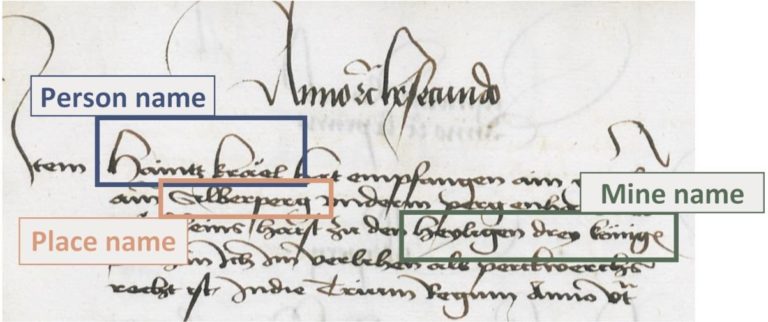
(c) T.M.M.M.T. 2021
Transcript: Item Haintz kráal hat empfangen ain grub[e]nam Silberperg vnderm perg enhalb des páchleins hait zu den heyligen drey könige[n]die han Ich Im verlihen als perckwerchsrecht ist, Indie Trium Regum Anno etc. (Hs. 37 pag. 50)
In order to semantically represent mining-related texts, and in this case the granting of mining rights, it is necessary to extract information on mines, mining areas, persons and other location. The text excerpt (paragraph 354) shows a mining claim in the mining area Silberberg (Alpbach, Tyrol). The necessary information is marked: Person: Haintz kráal, Mining area: Silberperg, Mine: heyligen drey könige[n], Date of award: Indie Trium Regum Anno, etc.
Open access to TMMMT's Knowledge Graph: User: guest PW: guest
To explore the TMMMT Knowledge Graph, we recomment to visit also the website Mining Hub.
The Knowledge Graph is also available via Zenodo where the most recent version was uploaded: DOI: 10.5281/zenodo.6276586
The TMMMT team used the event-centric ontology CIDOC CRM which is ISO certified and mostly used regarding the documentation of cultural heritage.
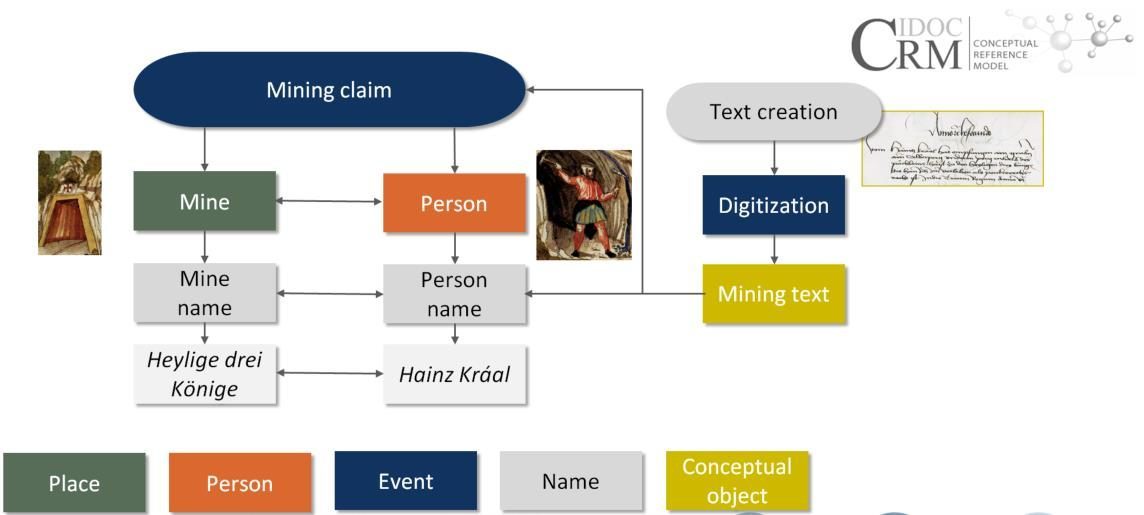
The figure depicts the conceptual representation of the above mentioned mining claim (paragraph 354) using the ontology CIDOC CRM
(c) T.M.M.M.T. 2021
The research team created the Knowledge Graph (KG) in RDF using the tool Karma. GraphDB triple store is used to visualise the KG.
The following illustration shows paragraph 354: the granting of the pit named heyligen drey könige[n] to Haintz kráal in the mining area of Silberberg as an extract from the KG (the nodes open to the left here). Furthermore, it is possible to access all mining rights that were granted to Heinz Kral in Hs. 37 (blue nodes). Any node gives further information regarding the name of the mine, geopgraphical location and the year when it was granted.
The individual nodes are connected by arrows, which represent the relationships between the information.
This way, many different pieces of information concerning the person Haintz Kráal can be discovered. The information would not be immediately obvious by simply reading the historical document. This enables historians to gather information about a person more easily and simplifies the recognition of larger contexts
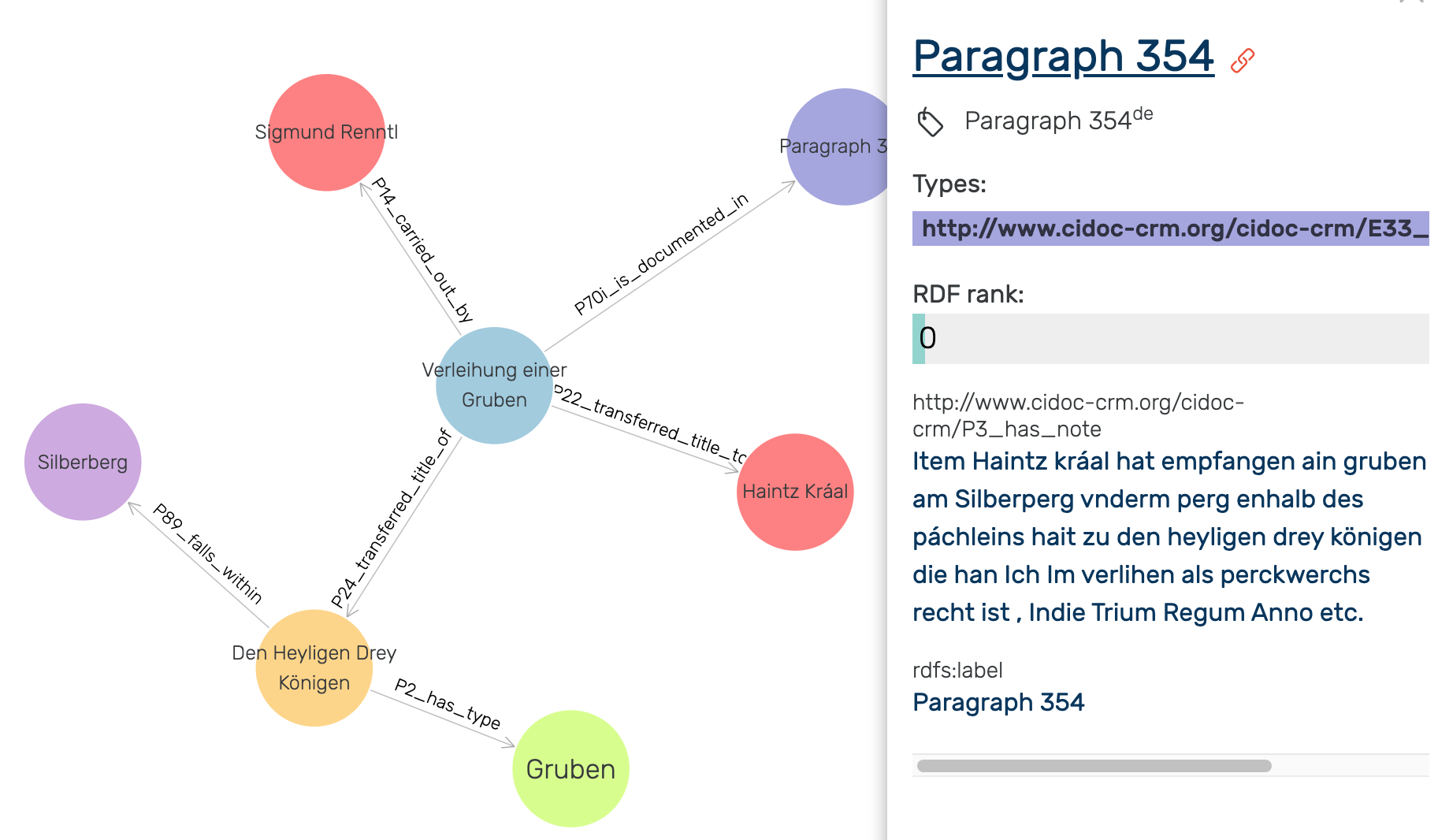
(c) T.M.M.M.T. 2021
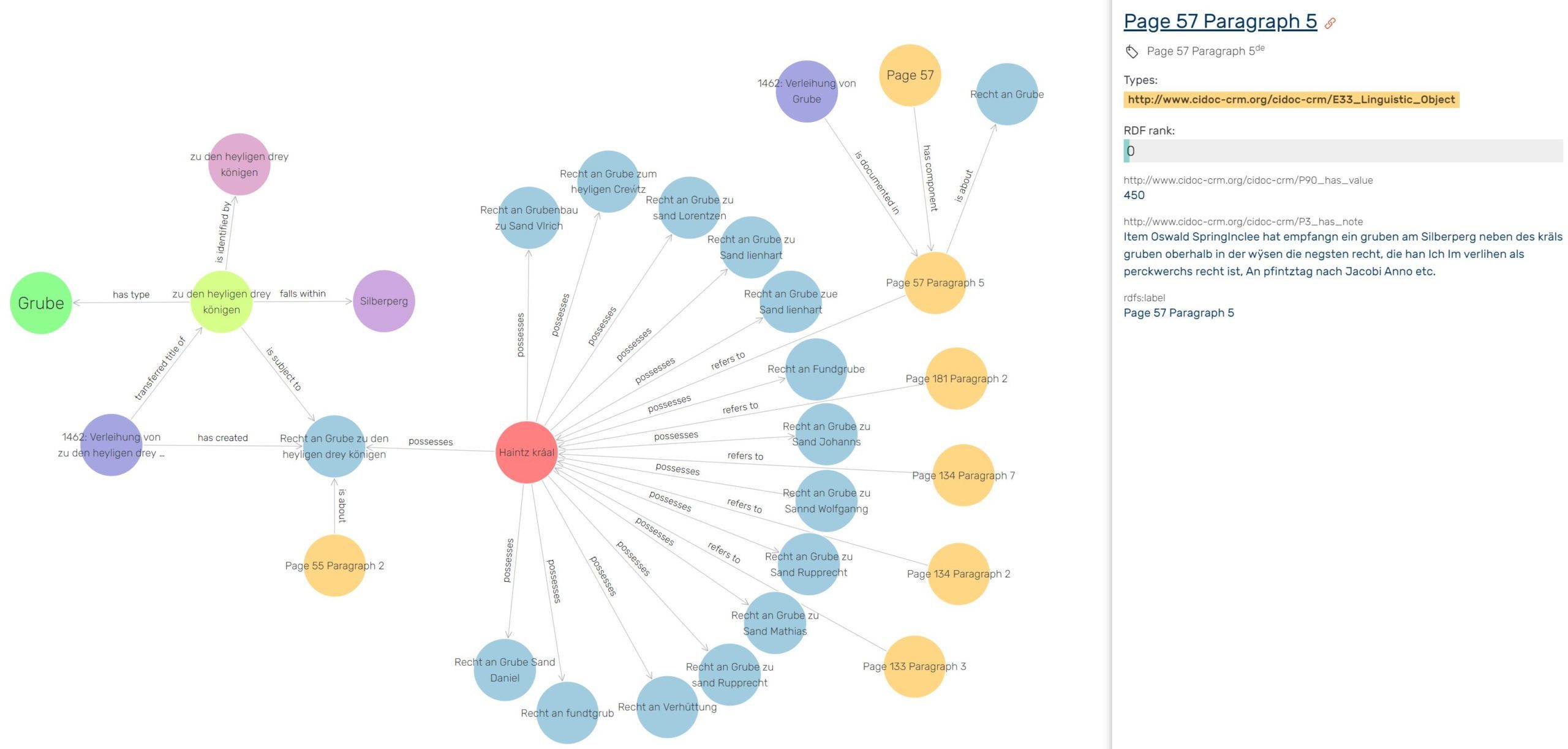
(c) T.M.M.M.T. 2021
Using GraphDB triple store gives easy and quick access to the semantically represented historical data. For example, it is possible to access all mentioned mines within the mining area Silberberg by just one click.
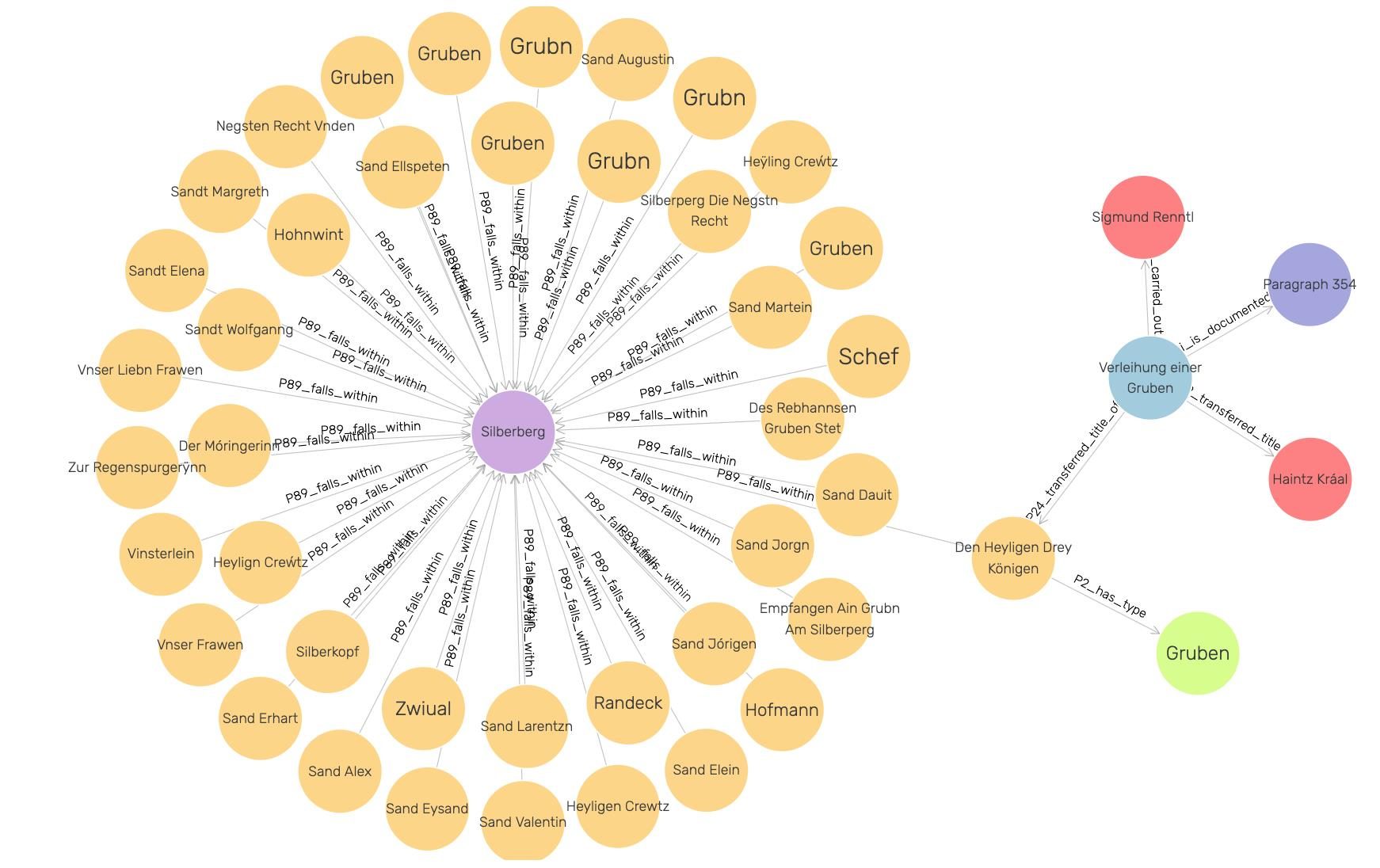
References
Hiebel, Gerald/Doerr, Martin/Eide, Øyvind (2017): CRMgeo: A Spatiotemporal Extension of CIDOC-CRM. International Journal on Digital Libraries Special Issue 18, 271. DOI: 10.1007/s00799-016-0192-4 [01.06.2021].